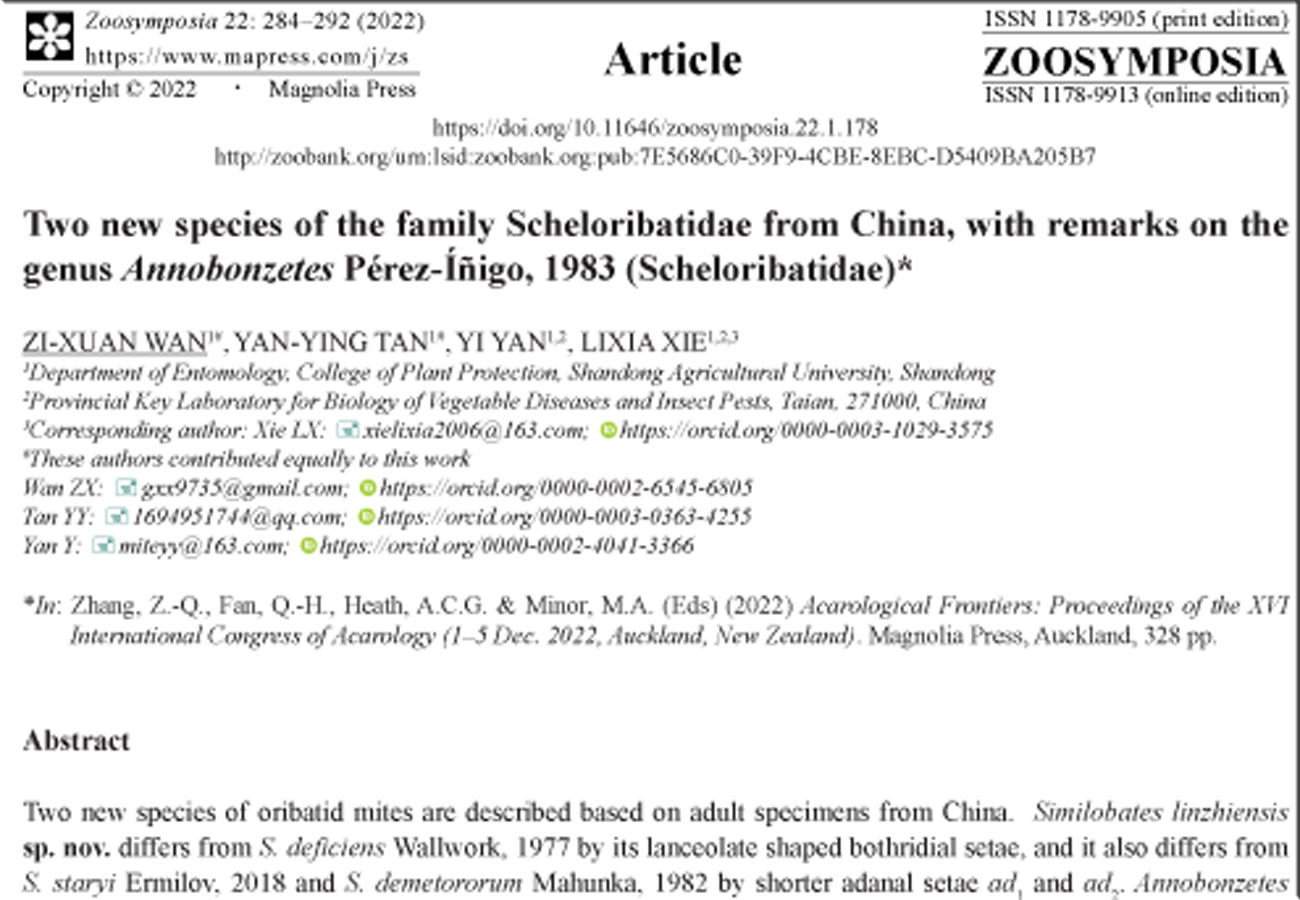Abstract
Two new species of oribatid mites are described based on adult specimens from China. Similobates linzhiensis sp. nov. differs from S. deficiens Wallwork, 1977 by its lanceolate shaped bothridial setae, and it also differs from S. staryi Ermilov, 2018 and S. demetororum Mahunka, 1982 by shorter adanal setae ad1 and ad2. Annobonzetes hamatus sp. nov. differs from A. sphaericus Pérez-Íñigo, 1983 by barbed prodorsal setae. The genera Annobonzetes and Similobates are recorded in China for the first time. The updated description and an identification key for the genus Annobonzetes are given.
References
Berlses, A. (1916) Centuria prima di Acari nuovi. Redia, 12, 19–67.
Corpuz-Raгos, L.A. (1980) Philippine Oribatei (Acarina) V. Scheloribates Berlese and related genera (Oribatulidae). Kalikasan, 9 (2–3), 169–245.
Ermilov, S.G. (2013) Contribution to the knowledge of the oribatid mite genus Similobates Mahunka 1982 (Acari: Oribatida: Scheloribatidae) on the basis of Vietnamese specimens. Zoologicheski Zhurnal, Budapest, 44 (1), 9–14.
Mahunka S. (1982) Oribatids from the Eastern Part of the Ethiopian Region (Acari) I. Acta Zoologica Academiae Scientiarum Hungaricae, 28 (3–4), 293–336.
Norton, R.A. (1977) A review of F. Grandjean’s system of leg chaetotaxy in the Oribatei (Acari) and its application to the family Damaeidae. In: Dindal, D.L. (Editor), Biology of oribatid mites. SUNY College of Environmental Science and Forestry, Syracuse, pp. 33–61.
Norton, R.A. & Behan-Pelletier, V.M. (2009) Oribatida. Chapter 15. In: Krantz, G.W. & Walter, D.E. (Editors), A Manual of Acarology. Texas Tech University Press, Lubbock, pp. 430–564.
Pérez-Íñigo. (1983) Resultados de la expedicion Peris-Alvarez a la isla de Annobon (13) Oribatid mites (4th series). Eos, LIX, 193–205.
Subías, L.S. (2004) Listado sistemático, sinonímico y biogeográfico de los Ácaros Oribátidos (Acariformes, Oribatida) del mundo (1758–2002). Graellsia, 60 (número extraordinario), 3–305. Updated version available at http://bba.bioucm.es/cont/docs/RO_1.pdf (Accessed in 2022) https://doi.org/10.3989/graellsia.2004.v60.iExtra.218
Travé, J. & Vachon, M. (1975) François Grandjean, 1882–1975 (Notice biographique et bibliographique). Acarologia, 17, 1–19.
Warburton. (1912) The Acarina of the Seychelles. Proceedings of the Cambridge Philosophical Society, 14, 349–360. https://doi.org/10.1111/j.1096-3642.1912.tb00105.x
Wallwork, J.A. (1977) 4. Acarina. 4.1. Cryptostigmata La faune terrestre de L’île de Sainte-Hélène (quatri me partie). Tervuren, Musee Royal de L’Afrique Centrale, Belgique Annales, 8, 189–258.


